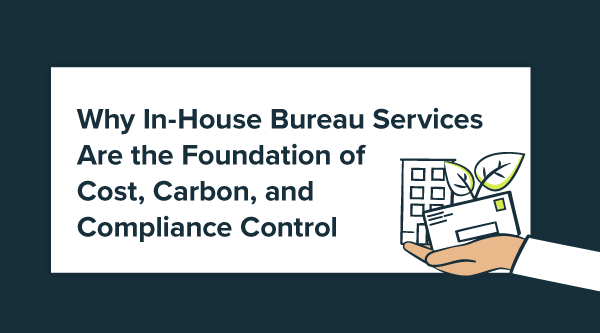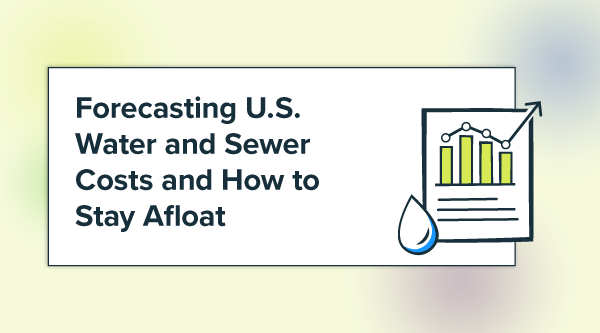In January 2019, Pennsylvania Governor Tom Wolf signed Executive Order 2019-01, titled “Commonwealth Leadership in Addressing Climate Change and Promoting Energy Conservation and Sustainable Governance.” The Order mandated that “all agencies under the Governor’s jurisdiction shall collectively reduce overall energy consumption by 3% per year, and 21% by 2025 from 2017 levels.”
The energy reduction directive was like dozens of others enacted by state and local governments and other organizations: Reduce energy consumption by a designated percentage in a future year, compared to a historic baseline year. Pretty straightforward, right?
In concept, yes. In implementation, not so much.
Energy reduction mandates like the one in Pennsylvania typically set a clear objective (e.g., Pennsylvania’s 21% reduction by 2025). The starting point—in PA’s case, energy consumed by all government facilities in 2017—is usually unknown and requires a substantial level of effort to determine and document.
When a mandate to reduce energy consumption or GHG emissions is enacted, how does a large, complex, decentralized organization answer the question: How much energy did we consume in our baseline year? Or what was our carbon footprint?
Gathering the Data
{{cta(‘a76c471a-4cbe-4870-920b-a1f9c6e6dac4′,’justifyright’)}}If your organization already maintains a centralized utility bill and energy information database, congratulations. You’re a member of a very small group. One state government, for example, reported that its utility bills are received and paid by approximately 120 separate agencies, making the collection, organization, and verification of the data quite difficult.
The latter scenario is common, and the decentralized processing makes it very challenging to get a big picture view and determine just how much energy the organization consumes. However, if you need to do it, here are some steps to get you started:
- Assemble a master list of utility vendors.
- Collect two to three years of historical bills for each utility account, either from existing systems or by contacting each vendor and requesting access to bills. Many will provide the bills in some electronic format.
- Generate a master list of facilities and their association to utility accounts, rate schedules, commodities, and meters (i.e., points of service).
- Create a centralized, comprehensive energy and sustainability database and enter the facility, vendor, account, rate schedule, and meter details.
Challenges with Gathering the Data
Those four steps might sound simple at first glance, but gathering all that data can be a major undertaking. Let’s examine some common challenges you may encounter while gathering your utility data:
- Labor Intensive and Time Consuming: Depending on your staring point, the data gathering process could take a year or more. If some work is already being done to audit and track utility bills—even just in Excel—you’re in decent shape. However, it’s all too common for these bills to go unchecked. Confirming vendors and identifying utility accounts can consume a lot of time.
- Decentralized Data: Decentralized agencies and departments may track utility invoices formally or informally and with varying levels of attention to detail. You might find that some departments are very discerning, while others pay the bills immediately without a second thought. So, some departments or agencies will require more attention than others.
- Data in Many Forms: Utility vendors often provide historical bills in a variety of formats, such as spreadsheets, CSV files, paper, etc. Water companies, for example, often deliver paper bills, and your organization may keep copies in filing cabinets or cardboard boxes. Uniting the data from a wide range of formats can be labor intensive.
- So Many Vendors: Large organizations may have dozens or hundreds of utility vendors and thousands of utility accounts.
Verifying the Data
When you’re working to establish your energy consumption baseline—the starting point—gathering the data isn’t enough. You must also verify that the data is correct. Don’t just assume the utility companies are perfect and don’t make mistakes. In fact, when you’re dealing with a large number of utility accounts, mistakes are bound to be made.
Here are steps you can take to ensure your data is complete and accurate:
- Audit the bills for accuracy and completeness.
- Note and rectify any missing or duplicate bills.
- Identify bills that appear to be incorrect and resolve confirmed issues.
- Document the resolutions to report any associated ROI.
Challenges with Verifying the Data
Once again, these steps aren’t always as easy as they initially seem. Some common challenges you may experience while verifying your utility data include the following:
- Visual Reviews Aren’t Enough: When you’re dealing with thousands or even tens of thousands of utility bills, you can easily miss things. A simple visual review—an “eyeball test”—is likely to miss a lot of potentially costly issues and result in incorrect conclusions.
- A Single Point of Failure: A spreadsheet that is capable of thoroughly analyzing and auditing thousands of utility bills will likely take hundreds of hours to develop and will be very complex and difficult to maintain. If a single employee is responsible for this task, you could be setting yourself up for problems down the road. If the employee leaves for another job or retires, you’ll be left scrambling to learn the ins and outs of the spreadsheet formulas.
How EnergyCAP Can Help
If you are challenged to meet a mandate, you could probably use some help. Instead of using up your team’s labor hours on this lengthy process, EnergyCAP can do it for you, freeing you up for higher-level planning and analysis.
EnergyCAP’s CAPture Services team can work with you to establish a plan for contacting your vendors or internal teams and gathering the historical billing data. After the identification of data sources and collection of the data, the CAPture Services team will then import the data into EnergyCAP and perform quality assurance testing to ensure accuracy, spot gaps in data, identify anomalies, audit the bills, and create follow-up flags on the potential issues.
EnergyCAP will continue to obtain and process your utility bills and can even resolve billing issues with your vendors, so you don’t have to. (Tip: When contacted about an incorrect bill, your vendor is likely to address it a bit more urgently if the bill has not yet been paid.) Additionally, once your bills are audited and approved, they can be delivered in an import-ready file to your AP system for payment, eliminating the need for redundant data entry.
While gathering and centralizing historical energy use and cost data can be a daunting task, it’s a required first step toward meeting an energy reduction mandate. After the historical data has been loaded into EnergyCAP and verified, an extensive library of reports, charts, and dashboards will provide the baseline data you need to begin your pursuit of the energy reduction mandate.
Part two of this three-part blog series will discuss methods for using utility bill and interval data to identify energy consumption and emissions reduction opportunities.
For more detailed information about centralized utility bill processing, please take a few minutes to read our field guide, “A Primer on Utility Bill Processing.”
Best-in-class portfolio-level energy and utility bill data management and reporting.
Real-time energy and sustainability analytics for high-performance, net-zero buildings.
A holistic view of financial-grade scope 1, 2, and 3 carbon emissions data across your entire business.
Energy and sustainability benchmarking compliance software designed for utilities.






